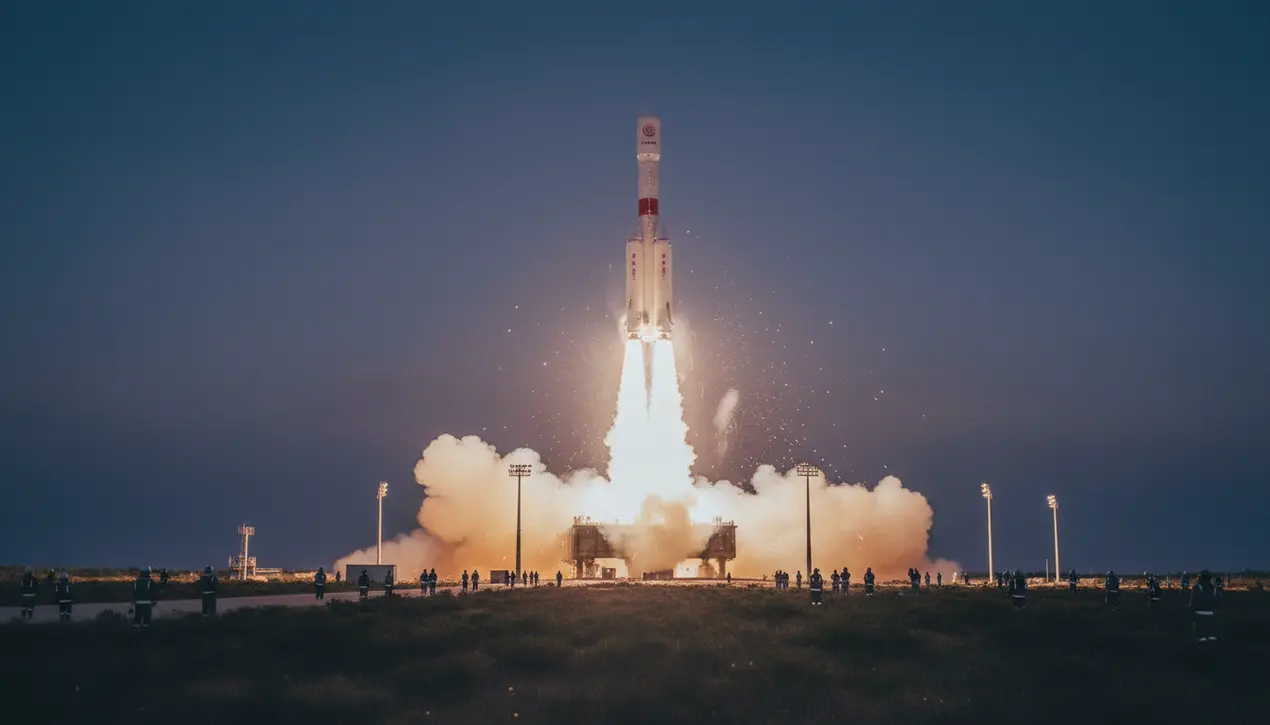
Sciencespace & astronomySpace Debris and Sustainability
China launches emergency mission to its space station
TH
Thomas Green
7 hours ago7 min read2 comments
In a dramatic unfolding that highlights the inherent perils of operating in the unforgiving environment of low Earth orbit, China has successfully executed an emergency resupply mission to its Tiangong space station, deploying the uncrewed Shenzhou-22 spacecraft to resolve a precarious situation that left three astronauts without a guaranteed ride home for over ten days. This urgent launch, which occurred on November 25th and has since successfully docked with the station, was a direct response to a potentially catastrophic discovery made just hours before the scheduled return of the previous crew, the Shenzhou-20 astronauts.As they prepared to depart on November 5th, mission controllers identified minor cracks in their spacecraft's window, suspected to be the result of an impact with a piece of orbital debris—a sobering reminder of the growing threat posed by space junk, which now comprises millions of fragments traveling at velocities capable of puncturing critical systems. Faced with an unacceptable risk for a crewed re-entry, the agency made the only safe call: the Shenzhou-20 crew returned to Earth on November 11th using the Shenzhou-21 vehicle that had brought the new team to the station.This decision, while prudent, stranded the incoming Shenzhou-21 astronauts aboard Tiangong without a designated lifeboat, a violation of a fundamental safety protocol in human spaceflight that mandates a continuously available escape craft, a rule NASA and Roscosmos have adhered to for decades aboard the International Space Station. The Shenzhou-22 mission, originally slated for a routine crew rotation in late 2026, was radically repurposed into a robotic cargo ferry, launched ahead of schedule without passengers but filled with essential supplies to replenish the stores consumed during the extended overlap of the two crews.This nimble response underscores China's growing operational maturity and the modular flexibility of its Shenzhou spacecraft, but it also exposes the fragility of its current logistical chain compared to the more robust, multi-vehicle support system enjoyed by the ISS, which utilizes Cygnus, Cargo Dragon, and Progress spacecraft for regular supply runs. The incident invites comparisons to historical space anomalies, such as the Apollo 13 mission, where ingenuity and rapid problem-solving averted disaster, though the root cause here was external rather than internal.It also raises pressing questions about the long-term sustainability of space operations, echoing concerns voiced by space traffic management experts about the escalating danger of orbital debris, a problem that requires international cooperation for effective mitigation. The Shenzhou-22 spacecraft will now remain docked, serving as the crew's vital lifeboat until it returns to Earth next year following the completion of the current team's six-month expedition, a mission that began under a cloud of uncertainty but now continues with a restored safety net, a testament to the relentless demands and remarkable adaptability required for humanity's continued presence in the final frontier.
#China
#Tiangong space station
#Shenzhou-22
#emergency mission
#space debris
#crew safety
#lead focus news
Stay Informed. Act Smarter.
Get weekly highlights, major headlines, and expert insights — then put your knowledge to work in our live prediction markets.
Related News
Comments
Loading comments...
© 2025 Outpoll Service LTD. All rights reserved.